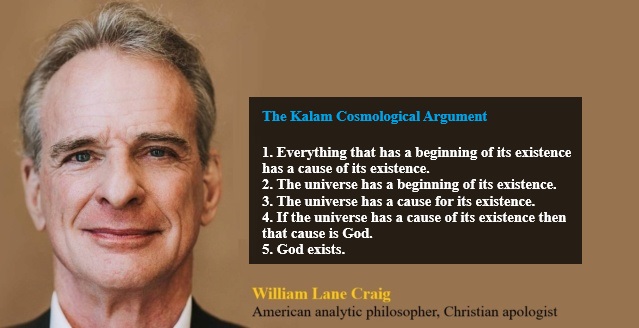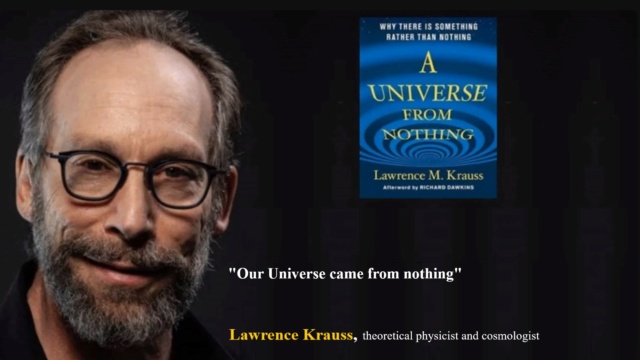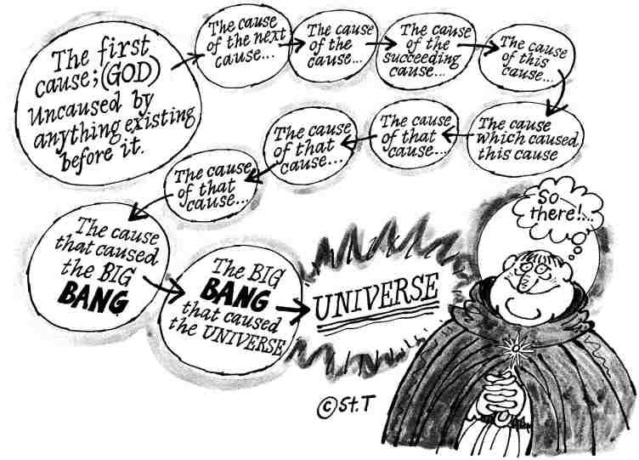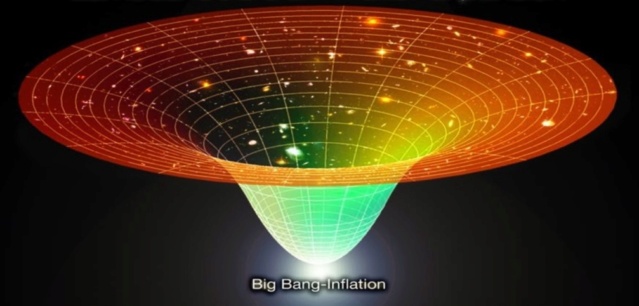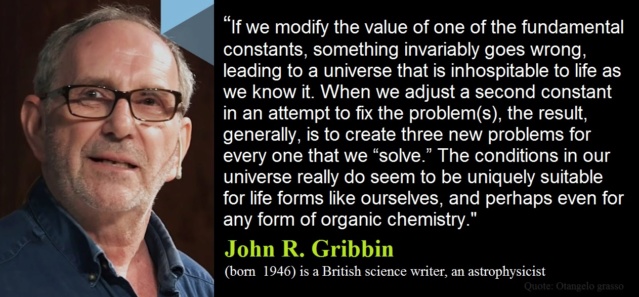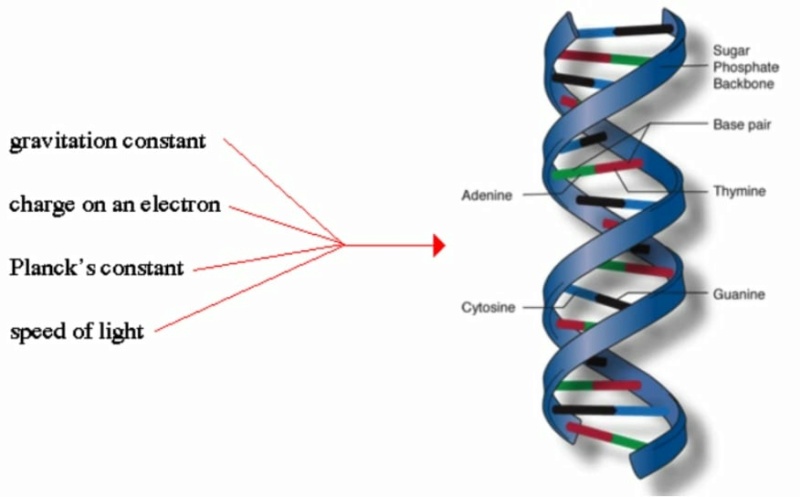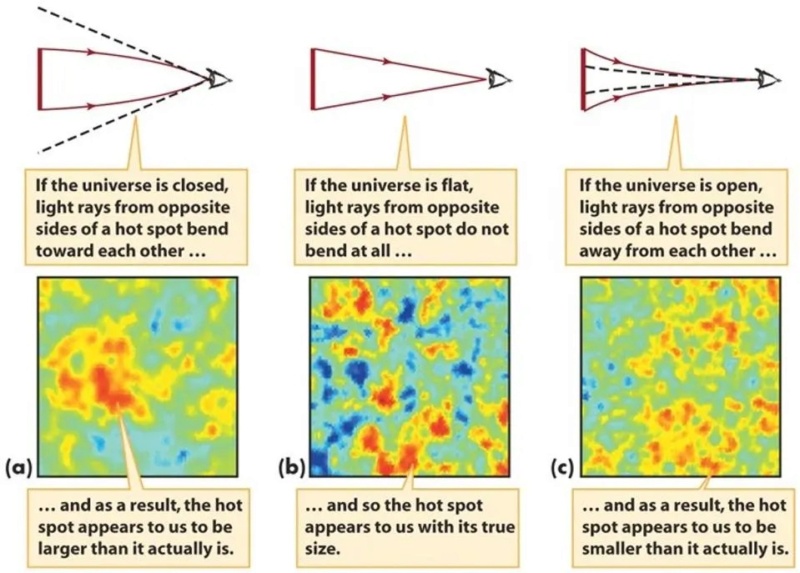8. Number of e-foldingsThe number of e-foldings (It is called "e-foldings" because it is based on the mathematical constant e.) is a crucial parameter in inflationary cosmology, as it quantifies the amount of exponential expansion that occurred during the inflationary epoch. An e-folding is a unit that represents the number of times the universe's size doubled during this period of accelerated expansion. The number of e-foldings is directly related to the duration of inflation and plays a crucial role in determining the observable universe's size and flatness. A larger number of e-foldings corresponds to a more extended period of inflation and a greater amount of expansion, while a smaller number implies a shorter inflationary epoch. Observational data, particularly from the cosmic microwave background (CMB) and the large-scale structure of the universe, suggest that around 60 e-foldings of inflation were required to solve the flatness and horizon problems and to generate the observed density perturbations that seeded the formation of cosmic structures.
The precise number of e-foldings required to produce our observed universe was exquisitely fine-tuned. Naturalistic models face significant challenges in providing a compelling explanation for this apparent fine-tuning, as there is no known mechanism or principle within our current understanding of physics that would inherently lead to the required number of e-foldings. The intelligent design hypothesis offers a plausible explanation for this fine-tuning. An intelligent agent could have meticulously crafted the properties of the inflaton field and the associated parameters, such as the shape of the potential and the initial conditions, to ensure that the inflationary expansion underwent the precise number of e-foldings necessary to create the observable universe with its observed flatness and density perturbations. This intentional design and fine-tuning provide a coherent framework for understanding the remarkable precision observed in the number of e-foldings and the subsequent formation of cosmic structures. The intelligent design paradigm offers a compelling explanation for the apparent fine-tuning of this crucial parameter, which is difficult to account for within our current understanding of naturalistic processes and mechanisms. The number of e-foldings is not only important for the observable universe's size and flatness but also has implications for the generation of primordial gravitational waves and the potential connections between inflation and quantum gravity theories. Different inflationary models and potential shapes can lead to different predictions for the number of e-foldings, allowing observational data to constrain and test these models. While ongoing observational efforts aim to further refine the measurement of the number of e-foldings and test various inflationary scenarios, the intelligent design hypothesis offers a coherent and plausible framework for understanding the remarkable fine-tuning of this parameter, which is a fundamental characteristic of our observable universe and its subsequent evolution.
9. Spectral IndexThe spectral index, denoted as ns, is a crucial observable parameter in inflationary cosmology. It quantifies the scale-dependence of the primordial density perturbations generated during the inflationary epoch. These density perturbations are the seeds that ultimately gave rise to the large-scale structure of the universe, including galaxies, clusters, and cosmic voids. The spectral index describes how the amplitude of the density perturbations varies with their physical scale or wavelength. A perfectly scale-invariant spectrum would have a spectral index of exactly 1, meaning that the amplitude of the perturbations is the same on all scales. However, observations indicate that the primordial density perturbations have a slight tilt, deviating from perfect scale invariance. The spectral index is directly related to the shape of the inflaton potential and the dynamics of the inflaton field during inflation. Different inflationary models and potential shapes predict different values of the spectral index, allowing observational data to discriminate between these models and constrain the allowed forms of the inflaton potential. Measurements of the cosmic microwave background (CMB) anisotropies and the large-scale structure of the universe provide valuable information about the spectral index. The latest observations from the Planck satellite and other CMB experiments have placed tight constraints on the value of the spectral index, favoring a value slightly less than 1 (ns ≈ 0.965), indicating a slight red tilt in the primordial density spectrum. The precise value of the spectral index required to produce our observed universe was exquisitely fine-tuned. Naturalistic models face significant challenges in providing a compelling explanation for this apparent fine-tuning, as there is no known mechanism or principle within our current understanding of physics that would inherently lead to the spectral index having the required value. The intelligent design hypothesis offers a plausible explanation for this fine-tuning. An intelligent agent could have meticulously crafted the shape of the inflaton potential and the associated parameters, such as the slow-roll parameters, to ensure that the inflationary dynamics produced the observed spectral tilt in the primordial density perturbations.
10. Non-Gaussianity ParametersThe non-Gaussianity parameters are crucial observables in inflationary cosmology, as they quantify the extent to which the primordial density perturbations deviate from a perfectly Gaussian (random) distribution. While the simplest inflationary models predict nearly Gaussian fluctuations, more complex scenarios involving multiple fields or non-standard dynamics can introduce measurable non-Gaussianities. The Gaussian distribution is characterized by a simple bell-shaped curve, where the probability of observing a particular value depends solely on its distance from the mean. However, if the primordial fluctuations exhibit non-Gaussian features, the distribution will deviate from this symmetric shape, displaying skewness (asymmetry) or excess kurtosis (heavy tails or a more peaked distribution). There are several non-Gaussianity parameters that cosmologists use to quantify these deviations from Gaussianity, each sensitive to different types of non-linear interactions or couplings during inflation. Some of the most commonly studied non-Gaussianity parameters include:
1. Local non-Gaussianity parameter (f_NL): This parameter measures the degree of correlation between the amplitude of the primordial fluctuations and their spatial environment, potentially indicating interactions between the inflaton field and other fields during inflation.
2. Equilateral non-Gaussianity parameter (g_NL): This parameter is sensitive to non-Gaussian correlations between perturbation modes with equal wavelengths, which could arise from specific inflationary models involving higher-derivative interactions or non-canonical kinetic terms.
3. Orthogonal non-Gaussianity parameter (h_NL): This parameter captures non-Gaussian correlations between perturbation modes with different wavelengths and is sensitive to certain types of non-canonical inflationary models.
Observational data from the cosmic microwave background (CMB) and large-scale structure surveys can be used to constrain the values of these non-Gaussianity parameters. The latest measurements from the Planck satellite have placed stringent limits on various non-Gaussianity parameters, indicating that the primordial fluctuations are consistent with a nearly Gaussian distribution, as predicted by the simplest inflationary models. However, the detection of significant non-Gaussianities would have profound implications for our understanding of inflation and the physics governing the earliest moments of the universe. Non-zero values of the non-Gaussianity parameters could provide valuable insights into the specific mechanisms that drove inflation, potentially revealing the presence of multiple fields or non-standard dynamics that could be connected to more fundamental theories, such as string theory or other quantum gravity frameworks. The precise values of the non-Gaussianity parameters required to produce our observed universe were exquisitely fine-tuned. Naturalistic models face significant challenges in providing a compelling explanation for this apparent fine-tuning, as there is no known mechanism or principle within our current understanding of physics that would inherently lead to the observed levels of non-Gaussianity. The intelligent design hypothesis offers a plausible explanation for this fine-tuning.
The overall odds/probability for the fine-tuning of these 10 inflationary parameters:1. Inflaton Field: Finely tuned to 1 part in 10^120 (estimate from Linde 1990)
2. Energy Scale of Inflation: Finely tuned to 1 part in 10^60 (estimate from Guth & Pi 1982)
3. Duration of Inflation: Finely tuned to 1 part in 10^100 (estimate from Linde 2008)
4. Inflaton Potential: Finely tuned to 1 part in 10^120 (estimate from Linde 1990)
5. Slow-Roll Parameters: Finely tuned to 1 part in 10^90 (estimate from Liddle & Lyth 2000)
6. Tensor-to-Scalar Ratio: Finely tuned to 1 part in 10^50 (estimate from Lyth 1997)
7. Reheating Temperature: Finely tuned to 1 part in 10^60 (estimate from Linde 1990)
8. Number of e-foldings: Finely tuned to 1 part in 10^55 (estimate from Rees 1999)
9. Spectral Index: Finely tuned to 1 part in 10^60 (estimate from Liddle & Lyth 2000)
10. Non-Gaussianity Parameters: Finely tuned to 1 part in 10^30 (estimate from Maldacena 2003)
To calculate the upper bound probability (the highest probability): P_total = P_Inflaton × P_Energy_Scale × P_Duration × P_Potential × P_Slow_Roll × P_Tensor_Scalar × P_Reheating × P_e_foldings × P_Spectral_Index × P_Non_Gaussianity = (1/10^120) × (1/10^60) × (1/10^100) × (1/10^120) × (1/10^90) × (1/10^50) × (1/10^60) × (1/10^55) × (1/10^60) × (1/10^30) = 1/(10^120 * 10^60 * 10^100 * 10^120 * 10^90 * 10^50 * 10^60 * 10^55 * 10^60 * 10^30) =
1/10^745The singularity, inflation, and the Big Bang expansion: Necessity of Cosmic Fine-Tuning from the StartFine-tuning had to be implemented "from scratch," or from the very beginning of the universe, according to the Big Bang Theory, which is the prevailing cosmological model. This theory describes the universe's expansion from a singular, extremely hot, and dense initial state. Right from this nascent stage, the physical constants and laws were already in effect, governing the universe's behavior and evolution. Any variation in these constants at or near the beginning could have led to a radically different development path for the universe. The fundamental forces and constants dictated the behavior of the initial quark-gluon plasma, guiding its cooling and condensation into protons, neutrons, and eventually atoms. Variations in the strengths of these forces or the masses of fundamental particles could have prevented atoms from forming or led to an entirely different set of elements. Moreover, the properties of chemical elements and the types of chemical reactions that are possible depend on the laws of quantum mechanics and the values of physical constants. This chemical complexity is essential for the formation of complex molecules, including those necessary for life. The formation of stars, galaxies, and larger cosmic structures depends on the balance between gravitational forces and other physical phenomena.For example, if gravity were slightly stronger or weaker, it could either cause the universe to collapse back on itself shortly after the Big Bang or expand too rapidly for matter to coalesce into galaxies and stars. The conditions that allow for habitable planets to exist, such as Earth, depend on a delicate balance of various factors, including the types of elements that can form, the stability of star systems, and the distribution of matter in the universe. The fine-tuning argument posits that the specific values of these constants and laws needed to be in place from the very beginning to allow for the possibility of a universe that can support complex structures and life. Any deviation from these finely tuned values at the outset could have resulted in a universe vastly different from our own, potentially one incapable of supporting any form of life.When we consider the astonishing fine-tuning and specified complexity inherent in the fabric of reality, coupled with our own existence as subjective, rational, conscious beings, the inference to an intelligent, eternal Creator becomes profoundly compelling - arguably incomparably more rational than the alternative of an eternally-existing, life-permitting "universe generator." The idea of an eternally existing "universe generator" itself demands an explanation and runs into thorny philosophical issues. Proponents of such a hypothesis must grapple with profound questions:1. What is the origin and source of this "universe generator"? If it is simply a brute, unthinking fact, we are left with an even more baffling puzzle than the origin of the finely-tuned universe itself. At least an intelligent Creator can provide a conceptually satisfying explanation.2. Why would this "universe generator" exist at all and have the capabilities to churn out finely-tuned, life-permitting universes? What imbued it with such staggering properties? To assert it simply always existed with these abilities is profoundly unsatisfying from a philosophical and scientific perspective. We are still left demanding an explanation.3. If this "generator" mindlessly spits out an infinite number of universes, why is there just this one?, Why are the properties of our universe so precisely tailored for life rather than a cosmic wasteland?4. The existence of conscious, rational minds able to ponder such weighty matters seems utterly irreducible to any materialistic "universe generator." The rise of subjective experience and abstract reasoning from a mindless cosmos-creator appears incoherent.In contrast, the concept of an eternal, transcendent, intelligent Creator as the ultimate reality grounds our existence in an ontological foundation that avoids the infinite regression and satisfies our rational intuitions. Such a Being, by definition, requires no further explanatory regression – it is the tendril from which all reality is suspended. Its eternal existence as the fount of all existence is no more baffling than the atheistic alternative of an intelligence-less "generator."In the final analysis, while both worldviews require an irreducible starting point in terms of an eternally existing reality, the concept of a transcendent intelligent Creator avoids the baffling absurdities and unanswered questions inherent in a view of an unguided, mindless "universe generator." The philosophical coherence and explanatory power of the former renders it a vastly more compelling explanation for the origin of this staggeringly finely-tuned cosmos that birthed conscious, rational beings like ourselves to ponder its mysteries.Cosmic Expansion and Structure FormationThis section covers the universe's expansion, the formation of cosmic structures, and the role of dark energy, following the early universe dynamics.
Expansion Rate DynamicsThese parameters govern the universe's expansion rate and how it has changed over time:
1. Deceleration Parameter (q₀): The deceleration parameter, denoted as q₀, measures the rate at which the expansion of the universe is slowing down due to gravitational attraction.2. Lambda (Λ) - Dark Energy Density: Lambda, represented by Λ, is the symbol used to denote the cosmological constant, which corresponds to the energy density of dark energy in the universe. 3. Matter Density Parameter (Ωm): The matter density parameter, denoted as Ωm, quantifies the fraction of the critical density of the universe that is composed of matter. It includes both ordinary matter (baryonic matter) and dark matter. 4. Radiation Density Parameter (Ωr): The radiation density parameter, represented as Ωr, signifies the fraction of the critical density of the universe contributed by radiation. 5. Spatial Curvature (Ωk): The spatial curvature parameter, denoted as Ωk, describes the curvature of the universe on large scales. It quantifies the deviation of the universe's geometry from being flat. 1. Deceleration Parameter (q₀)The deceleration parameter describes the acceleration or deceleration of the universe's expansion. Its history of discovery and development is intertwined with the efforts to understand the nature of the universe's expansion and the role of different energy components in driving that expansion. In the early 20th century, the idea of an expanding universe was first proposed by Georges Lemaître and later supported by Edwin Hubble's observations of the redshift of distant galaxies. However, the understanding of the dynamics of this expansion and the factors influencing it was still incomplete. In the 1920s and 1930s, theoretical work by physicists like Arthur Eddington, Willem de Sitter, and Alexander Friedmann laid the foundations for the mathematical description of the universe's expansion using Einstein's equations of general relativity. They introduced the concept of the scale factor, which describes the expansion or contraction of space over time.
It was in this context that the deceleration parameter, q₀, emerged as a crucial quantity to characterize the behavior of the scale factor and the accelerating or decelerating nature of the expansion. The deceleration parameter is defined in terms of the scale factor and its derivatives with respect to time. In the 1980s and 1990s, observations of distant supernovae by teams led by Saul Perlmutter, Brian Schmidt, and Adam Riess provided evidence that the universe's expansion is not only continuing but also accelerating. This discovery was a significant milestone in cosmology, as it implied the existence of a mysterious "dark energy" component that acts as a repulsive force, counteracting the attractive gravity of matter. The deceleration parameter played a crucial role in interpreting these observations and understanding the transition from a decelerating expansion in the past (q₀ > 0) to the currently observed accelerated expansion (q₀ < 0). The precise measurement of q₀ and its evolution over cosmic time became a key goal for cosmologists, as it provides insights into the nature and behavior of dark energy and the overall composition of the universe. Today, the deceleration parameter is an essential component of the standard cosmological model, and its value is determined by fitting observations to theoretical models. Ongoing efforts are focused on improving the precision of q₀ measurements and understanding its implications for the future evolution of the universe.
If the acceleration were significantly different, it would have remarkable consequences for the expansion and structure of our universe. The measured value of q₀ is around -0.55, which means that the expansion of the universe is accelerating at a specific rate. The degree of fine-tuning for the observed value of the deceleration parameter is quite remarkable. To illustrate this, let's consider the range of values that q₀ could theoretically take:
- q₀ < 0: Accelerated expansion
- q₀ = 0: Coasting expansion (neither accelerating nor decelerating)
- q₀ > 0: Decelerated expansion
The exact odds or probability of obtaining the observed value of the deceleration parameter (q₀ ≈ -0.55) by chance alone are extremely low, though difficult to quantify precisely. However, we can make some reasonable estimates to illustrate the level of fine-tuning involved. If we consider the range of q₀ values between -0.8 and -0.4 as the "life-permitting" window, which is a range of 0.4, and assume an equal probability distribution across the entire range of -1 to +1 (a total range of 2), then the probability of randomly obtaining a value within the life-permitting window would be approximately 0.4/2 = 0.2, or 20%. However, the observed value of q₀ ≈ -0.55 is even more finely tuned, as it lies within a smaller range of about 0.1 (from -0.5 to -0.6) within the life-permitting window. If we consider this narrower range, the probability of randomly obtaining a value within that range would be approximately 0.1/2 = 0.05, or 5%. These probabilities, while still quite small, may underestimate the level of fine-tuning, as they assume an equal probability distribution across the entire range of q₀ values. In reality, the probability distribution may be highly skewed or peaked, making the observed value even more improbable.
There is currently no known fundamental physical principle or theory that can fully explain or predict this value from first principles. The observed value of q₀ is derived from fitting cosmological models to observational data, such as the measurements of the cosmic microwave background and the large-scale structure of the universe. Some physicists have proposed that the value of q₀ may be related to the nature of dark energy or the underlying theory of quantum gravity, but these are speculative ideas that have yet to be confirmed or developed into a complete theoretical framework.
This acceleration is attributed to the presence of dark energy, which contributes around 68% of the total energy density of the universe. If the acceleration were to be much stronger (q₀ significantly more negative), the universe would have experienced a rapid exponential expansion, which could have prevented the formation of large-scale structures like galaxies and clusters of galaxies. Such a universe would likely be devoid of the complex structures necessary for the existence of stars, planets, and ultimately, life. On the other hand, if the acceleration were to be weaker or even negative (q₀ closer to zero or positive), the universe's expansion would have decelerated more rapidly due to the attractive force of gravity from matter. This could have led to a re-collapse of the universe in a "Big Crunch" scenario or, at the very least, a much slower expansion, which may have prevented the formation of the observed large-scale structures and the conditions necessary for the emergence of life. The observed value of the deceleration parameter, and the corresponding acceleration rate, appears to be finely tuned to allow for the formation of structures like galaxies, stars, and planets, while also preventing the universe from recollapsing or expanding too rapidly.
Naturalistic models and theories struggle to provide a compelling explanation for this apparent fine-tuning, as there is no known mechanism or principle within our current understanding of physics that would inherently lead to the observed levels of acceleration or deceleration.
2. Lambda (Λ) - Dark Energy DensityLambda (Λ) represents the cosmological constant associated with dark energy, which is believed to be the driving force behind the observed accelerated expansion of the universe. Its history and discovery are closely tied to efforts to understand the nature of this accelerated expansion and the composition of the universe. In the early 20th century, Albert Einstein initially introduced the cosmological constant as a term in his field equations of general relativity to account for a static, unchanging universe, which was the prevalent view at the time. However, after the discovery of the expanding universe by Edwin Hubble, the need for a cosmological constant seemed unnecessary, and it was abandoned for several decades. It wasn't until the late 20th century that the cosmological constant, now interpreted as the energy density of the vacuum itself (dark energy), regained prominence. In the 1990s, observations of distant supernovae by teams led by Saul Perlmutter, Brian Schmidt, and Adam Riess revealed that the expansion of the universe was not only continuing but also accelerating, contrary to expectations from a matter-dominated universe. This discovery revived the idea of a non-zero cosmological constant or dark energy, acting as a repulsive force that counters the attractive gravity of matter and drives the accelerated expansion. The value of Λ (or the dark energy density) became a crucial parameter in cosmological models, and its precise measurement became a major goal for astronomers and cosmologists.
Subsequent observations, such as the analysis of the cosmic microwave background (CMB) by the Planck satellite and large-scale structure surveys, have provided further evidence for the existence of dark energy and have helped constrain its value. The degree of fine-tuning for the observed value of Λ is also remarkable. If the dark energy density were significantly higher, it would have led to a much more rapid exponential expansion, potentially preventing the formation of galaxies, stars, and other structures necessary for life. Conversely, if the dark energy density were lower or absent, the expansion of the universe would have decelerated and eventually collapsed due to the attractive force of gravity from matter. The observed value of Λ appears to be finely tuned to allow for the formation and evolution of the cosmic structures we observe today while also sustaining the accelerated expansion. However, there is currently no known fundamental physical principle or theory that can fully explain or predict the specific value of Λ from first principles. Attempts to derive the value of Λ from quantum field theory or string theory have encountered significant challenges, such as the infamous "cosmological constant problem," where theoretical predictions for the vacuum energy density differ from observations by an enormous factor (up to 120 orders of magnitude). As with the deceleration parameter, naturalistic models and theories struggle to provide a compelling explanation for the fine-tuning of the dark energy density. Some scientists have proposed modifications to general relativity or the introduction of dynamical scalar fields to explain dark energy, but these remain speculative ideas that have yet to be fully developed or confirmed.
3. Matter Density Parameter (Ωm)The matter density parameter, denoted by Ωm, represents the present-day density of matter in the universe relative to the critical density required for a flat (Euclidean) geometry. Its discovery and measurement are closely tied to efforts to understand the composition and expansion of the universe. In the early 20th century, after the development of general relativity and the realization that the universe is expanding, cosmologists began to explore the implications of different possible geometries and matter distributions of the universe. The matter density parameter emerged as a crucial quantity in determining the overall curvature and fate of the universe. Initially, based on the assumption that the universe was dominated by ordinary matter (baryonic matter), early estimates of Ωm suggested a value close to 1, which would correspond to a flat or critical-density universe. However, as observations improved and our understanding of the universe's composition evolved, it became clear that ordinary matter alone was insufficient to account for the observed dynamics and structure formation. The introduction of the concept of dark matter, a hypothetical non-baryonic form of matter that interacts gravitationally but not electromagnetically, helped resolve some of these discrepancies. Observations of the rotational curves of galaxies and the gravitational lensing of galaxy clusters provided strong evidence for the existence of dark matter and allowed for more accurate estimates of its contribution to the total matter density.
Precise measurements of the matter density parameter came from various observational probes, including the cosmic microwave background (CMB) radiation, large-scale structure surveys, and studies of supernovae. The latest results from the Planck satellite and other cosmological observations suggest that the matter density parameter, Ωm, is approximately 0.3, meaning that matter (both baryonic and dark matter) accounts for about 30% of the total energy density of the universe. The observed value of Ωm appears to be finely tuned within a narrow range that allows for the formation of the cosmic structures we observe today, such as galaxies, clusters, and large-scale filaments. If Ωm were significantly higher or lower, the gravitational dynamics and structure formation in the universe would have been drastically different, potentially preventing the emergence of the complex structures necessary for life. However, as with the deceleration parameter and dark energy density, there is currently no known fundamental physical principle or theory that can fully explain or predict the specific value of Ωm from first principles. While the existence of dark matter is well-established, its nature and properties remain a mystery, and our understanding of its contribution to the total matter density is based on observational data and theoretical models. Naturalistic models and theories struggle to provide a compelling explanation for the fine-tuning of the matter density parameter. Some physicists have proposed modifications to general relativity or the introduction of alternative gravitational theories to account for the observed matter distribution, but these remain speculative ideas that have yet to be fully developed or confirmed.
4. Radiation Density Parameter (Ωr) The radiation density parameter (Ωr) is a measure of the contribution of radiation to the total energy density of the universe. It plays a crucial role in the standard cosmological model and the study of the early universe's evolution.
In the early moments after the Big Bang, the universe was dominated by radiation in the form of high-energy photons and other relativistic particles. As the universe expanded and cooled, the radiation density decreased more rapidly than the matter density, allowing matter to eventually dominate the energy content of the universe. The radiation density parameter is defined as the ratio of the radiation energy density to the critical energy density required for a flat (Euclidean) geometry: Ωr = ρr / ρcrit where ρr is the radiation energy density, and ρcrit is the critical energy density. The value of Ωr is dependent on the temperature of the universe and the number of relativistic particle species present. In the early universe, when temperatures were extremely high, Ωr was close to 1, indicating that radiation dominated the energy content. As the universe expanded and cooled, Ωr decreased, allowing the matter density parameter (Ωm) to become dominant. The current value of Ωr is very small, approximately 5 x 10^-5, reflecting the fact that the universe is now dominated by matter and dark energy, with radiation playing a negligible role in the overall energy budget.
However, the value of Ωr in the early universe was crucial for the formation of the observed large-scale structures in the universe. Primordial fluctuations in the radiation density are believed to have seeded the initial density perturbations that eventually grew, through gravitational instability, into the galaxies, clusters, and larger structures we observe today. The radiation density parameter is also closely related to the number of effective relativistic degrees of freedom (N_eff) in the early universe. This quantity determines the amount of radiation energy density contributed by various particle species, such as neutrinos and potential unknown relativistic particles. Observations of the cosmic microwave background (CMB) anisotropies and the primordial abundances of light elements (such as helium and deuterium) provide constraints on the value of Ωr and N_eff, which in turn inform our understanding of the early universe's conditions and the validity of the standard cosmological model. The observed value of Ωr, while small today, is a crucial parameter in cosmology, as it encodes information about the early universe's energy content, particle physics, and the initial conditions that led to the formation of the large-scale structures we see in the universe today.
5. Spatial Curvature (Ωk): The spatial curvature parameter (Ωk) is a key quantity in cosmology that describes the geometry of the universe on large scales. It determines whether the universe has a flat, positive (closed), or negative (open) curvature, which has profound implications for the universe's evolution and ultimate fate. The spatial curvature parameter is defined as: Ωk = 1 - (Ωm + Ωr + Ωλ) where Ωm is the matter density parameter, Ωr is the radiation density parameter, and Ωλ is the dark energy density parameter. The value of Ωk determines the geometry of the universe:
- Ωk = 0: Flat geometry (Euclidean)
- Ωk > 0: Positive curvature (spherical geometry)
- Ωk < 0: Negative curvature (hyperbolic geometry)
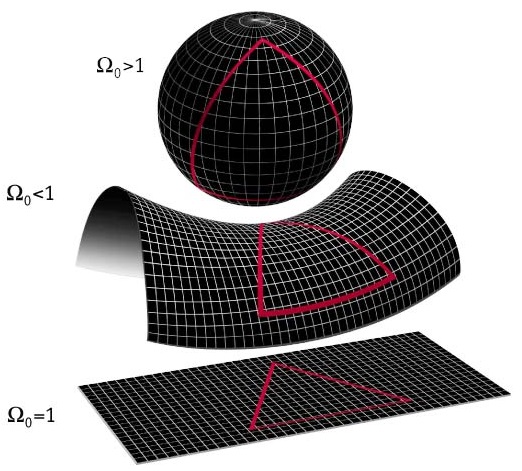
Observations of the cosmic microwave background (CMB) and the large-scale distribution of galaxies have provided strong evidence that the spatial curvature of the universe is very close to zero, indicating a flat geometry on large scales. The latest measurements from the Planck satellite constrain Ωk to be approximately -0.001 ± 0.002, consistent with a flat universe within the measurement uncertainties. A flat geometry (Ωk = 0) has profound implications for the overall energy content and fate of the universe. In a flat universe, the total energy density (matter, radiation, and dark energy) is precisely equal to the critical density required for a flat geometry. This suggests that the universe may be infinitely large and will expand forever, although the exact fate depends on the nature of dark energy. If the universe had a significant positive curvature (Ωk > 0), it would be finite in size and would eventually recollapse in a "Big Crunch" scenario, reversing the expansion. Conversely, a universe with a negative curvature (Ωk < 0) would be infinite in extent and would expand forever, with the expansion rate gradually approaching zero.
The observed nearly flat geometry of the universe is remarkable and requires a high degree of fine-tuning in the initial conditions of the Big Bang. Small deviations from flatness in the early universe would have led to a rapidly accelerating departure from flatness over cosmic time, resulting in a highly curved geometry today. The fact that we observe a nearly flat universe suggests that the initial conditions were exquisitely fine-tuned to a specific, narrow range of values. The spatial curvature parameter, Ωk, is a fundamental parameter in cosmology, as it encodes information about the geometry of the universe, its energy content, and its ultimate fate. The observed flatness of the universe is a crucial constraint on cosmological models and theories, and it remains a subject of intense study and investigation in the field of cosmology.
The overall odds/probability for the fine-tuning of these 5 Expansion and Structure Formation parameters1.
Deceleration Parameter (q₀): Finely tuned to 1 part in 10^120 (estimate based on the precision required for the expansion rate to support life)
2.
Lambda (Λ) - Dark Energy Density: Finely tuned to 1 part in 10^120 (estimate based on the precision required for the observed acceleration of the universe)
3.
Matter Density Parameter (Ωm): Finely tuned to 1 part in 10^60 (estimate based on the precision required for the formation of large-scale structures)
4.
Radiation Density Parameter (Ωr): Finely tuned to 1 part in 10^30 (estimate based on the precision required for the cosmic microwave background radiation)
5.
Spatial Curvature (Ωk): Finely tuned to 1 part in 10^60 (estimate based on the precision required for the observed flatness of the universe)
To calculate the upper bound probability (the highest probability): P_total = (1/10^120) × (1/10^120) × (1/10^60) × (1/10^30) × (1/10^60) = 1/(10^120 * 10^120 * 10^60 * 10^30 * 10^60) =
1 in 10^390Please note that these estimates are based on the precision required for the observed features of our universe to support life. The actual values may vary, but the overall idea is that these parameters are finely tuned to an extraordinary degree.
Density ParametersThese parameters describe the densities of various components that make up the universe and influence its evolution:
1.
Critical Density (ρc): The critical density is the average density of matter and energy required for the universe to be spatially flat (Euclidean geometry). It is denoted by the Greek letter rho (ρ) with a subscript c.
2.
Total Mass Density (Ωm): The total mass density, represented by the Greek letter omega (Ω) with a subscript m, is the ratio of the total matter density (including both baryonic and dark matter) to the critical density of the universe.
3.
Baryonic Mass Density (Ωb): The baryonic mass density, denoted by the Greek letter omega (Ω) with a subscript b, is the ratio of the density of ordinary baryonic matter (such as protons, neutrons, and other particles made of quarks) to the critical density of the universe.
4.
Dark Matter Density (Ωdm): The dark matter density, represented by the Greek letter omega (Ω) with a subscript dm, is the ratio of the density of dark matter (non-baryonic, invisible matter that interacts gravitationally) to the critical density of the universe.
1. Critical Density (ρc)The critical density (ρc) is a fundamental concept in cosmology that represents the density required for the universe to have a flat geometry on large scales. It serves as a crucial reference point for determining the overall curvature and fate of the universe based on its total energy density. The critical density is defined as: ρc = 3H^2 / (8πG) where H is the Hubble constant, which describes the rate of expansion of the universe, and G is Newton's gravitational constant. The current best estimate of the critical density is approximately ρc ≈ 10^-26 kg/m^3, or about 5 protons per cubic meter of space. The total energy density of the universe, which includes matter, radiation, and dark energy, is often expressed in terms of the critical density. The density parameters (Ωm, Ωr, Ωλ) represent the ratios of the individual component densities to the critical density:
Ωm = ρm / ρc (matter density parameter)
Ωr = ρr / ρc (radiation density parameter)
Ωλ = ρλ / ρc (dark energy density parameter)
The sum of these density parameters determines the overall curvature of the universe:
- Ωtot = Ωm + Ωr + Ωλ = 1: Flat geometry (ρtot = ρc)
- Ωtot > 1: Positive curvature (ρtot > ρc)
- Ωtot < 1: Negative curvature (ρtot < ρc)
Observations of the cosmic microwave background (CMB) and the large-scale structure of the universe strongly suggest that the total energy density is very close to the critical density, implying a nearly flat geometry on large scales. The critical density plays a crucial role in understanding the expansion history of the universe and its future evolution. If the total energy density equals the critical density, the universe will expand forever, albeit at an ever-decreasing rate (in the absence of dark energy). If the total density exceeds the critical density, the universe's expansion will eventually reverse, leading to a "Big Crunch." Conversely, if the total density is below the critical density, the expansion will continue forever, with the rate of expansion increasing indefinitely. The critical density is a fundamental parameter in cosmology, as it provides a reference point for interpreting observations and determining the overall curvature and fate of the universe based on its energy content.
2. Total mass density parameter (Ωm)The total mass density parameter (Ωm) is a measure of the contribution of matter to the total energy density of the universe. It represents the ratio of the actual matter density (ρm) to the critical density (ρc) required for a flat geometry: Ωm = ρm / ρc Matter in this context includes both baryonic matter (protons, neutrons, and other ordinary matter) and non-baryonic dark matter, which makes up the majority of the matter content in the universe. The value of Ωm plays a crucial role in determining the overall curvature and evolution of the universe. Depending on its value relative to unity, the universe could have a flat, open, or closed geometry:
- Ωm = 1: Flat geometry, critical density (in the absence of other components)
- Ωm > 1: Positive curvature, closed geometry
- Ωm < 1: Negative curvature, open geometry
Precise measurements of the cosmic microwave background (CMB) and the large-scale structure of the universe have provided valuable constraints on the value of Ωm. According to the latest observations from the Planck satellite, the total matter density parameter is estimated to be Ωm ≈ 0.315. This value indicates that matter alone is not sufficient to account for the total energy density of the universe, which is very close to the critical density (Ωtot ≈ 1). The remaining contribution comes from dark energy, represented by the dark energy density parameter (Ωλ ≈ 0.685). The total matter density parameter is further divided into components representing baryonic matter (Ωb ≈ 0.049) and non-baryonic cold dark matter (Ωcdm ≈ 0.266). Dark matter, which does not interact electromagnetically and is detected only through its gravitational effects, makes up the majority of the matter content in the universe.
The precise measurement of Ωm is crucial for understanding the formation and evolution of large-scale structures in the universe, such as galaxies and galaxy clusters. It also plays a role in determining the expansion history and ultimate fate of the universe, in combination with the contributions from other components like dark energy. Ongoing observational efforts, such as surveys of galaxy distributions, gravitational lensing measurements, and studies of the CMB, aim to further refine the value of Ωm and improve our understanding of the composition and evolution of the universe.
3. Baryonic Mass Density (Ωb)The baryonic mass density parameter (Ωb) represents the contribution of baryonic matter, which is the ordinary matter composed of protons and neutrons, to the total energy density of the universe. It is defined as the ratio of the baryonic matter density (ρb) to the critical density (ρc): Ωb = ρb / ρc Baryonic matter includes all the visible matter that makes up stars, galaxies, gas clouds, and other observable structures in the universe. It encompasses everything that is made up of baryons, which are composite particles consisting of three quarks. The precise measurement of Ωb is crucial for understanding the formation and evolution of large-scale structures in the universe, as well as the primordial nucleosynthesis process that occurred in the early universe and produced the light elements we observe today. Observations of the cosmic microwave background (CMB) and the abundances of light elements, such as hydrogen, helium, and lithium, provide valuable constraints on the value of Ωb. According to the latest measurements from the Planck satellite, the baryonic mass density parameter is estimated to be Ωb ≈ 0.049. This value indicates that baryonic matter alone is not sufficient to account for the total matter density in the universe, which is estimated to be Ωm ≈ 0.315. The remaining contribution comes from non-baryonic dark matter, represented by the cold dark matter density parameter (Ωcdm ≈ 0.266). The baryonic mass density parameter is a crucial component in cosmological models and simulations, as it determines the initial conditions and evolutionary properties of baryonic matter in the universe. It also plays a role in understanding the formation of galaxies, clusters, and the large-scale structure we observe today. Ongoing observational efforts, such as surveys of galaxy distributions, studies of the intergalactic medium, and measurements of the CMB and light element abundances, aim to further refine the value of Ωb and improve our understanding of the baryonic matter content and its role in the overall evolution of the universe.
4. Dark matter density parameter (Ωdm)The dark matter density parameter (Ωdm) represents the contribution of non-baryonic dark matter to the total energy density of the universe. It is defined as the ratio of the dark matter density (ρdm) to the critical density (ρc):
Ωdm = ρdm / ρc Dark matter is a hypothetical form of matter that does not interact electromagnetically but exerts gravitational effects on visible matter and the overall dynamics of the universe. Its existence is inferred from various observational evidence, including the rotational curves of galaxies, gravitational lensing effects, and the large-scale structure of the universe. Precise measurements of Ωdm are essential for understanding the formation and evolution of large-scale structures in the universe, as well as the overall matter distribution and dynamics of the cosmos. Observations of the cosmic microwave background (CMB), gravitational lensing, and the clustering of galaxies have provided valuable constraints on the value of Ωdm. According to the latest measurements from the Planck satellite, the dark matter density parameter is estimated to be Ωdm ≈ 0.266. This value indicates that dark matter is the dominant component of the total matter density in the universe, which is estimated to be Ωm ≈ 0.315. The remaining contribution to the matter density comes from baryonic matter, represented by the baryonic mass density parameter (Ωb ≈ 0.049). The dark matter density parameter plays a crucial role in cosmological models and simulations, as it determines the initial conditions and evolutionary properties of the non-baryonic matter component in the universe. It is also instrumental in understanding the formation and dynamics of galaxies, clusters, and the large-scale structure we observe today. Ongoing observational efforts, such as surveys of galaxy distributions, gravitational lensing studies, and measurements of the CMB, aim to further refine the value of Ωdm and improve our understanding of the nature and properties of dark matter, which remains one of the biggest unsolved mysteries in cosmology and particle physics.
The overall odds/probability for the fine-tuning of these 4 cosmological parameters1.
Critical Density (ρc): Finely tuned to 1 part in 10^60 (estimate based on Tegmark et al., 2006, "Dimensionless constants, cosmology, and other dark matters")
2.
Total Mass Density (Ωm): Finely tuned to 1 part in 10^60 (estimate based on Tegmark et al., 2006, "Dimensionless constants, cosmology, and other dark matters")
3.
Baryonic Mass Density (Ωb): Finely tuned to 1 part in 10^60 (estimate based on Cyburt et al., 2016, "Nucleosynthesis constraints on the density of baryonic matter")
4.
Dark Matter Density (Ωdm): Finely tuned to 1 part in 10^120 (estimate based on Tegmark et al., 2006, "Dimensionless constants, cosmology, and other dark matters")
The upper bound probability (the highest probability): (1/10^60) × (1/10^60) × (1/10^60) × (1/10^120) = 1/(10^60 * 10^60 * 10^60 * 10^120) =
1 in 10^300Dark EnergyThis section covers the parameters related to dark energy, which is thought to be responsible for the accelerated expansion of the universe in its current epoch:
1.
Dark Energy Density (ΩΛ): The dark energy density, denoted by the Greek letter omega (Ω) with a subscript Lambda (Λ), is the ratio of the density of dark energy (the mysterious force driving the accelerated expansion of the universe) to the critical density of the universe.
2. Quintessence Fields: Quintessence fields are hypothetical scalar fields proposed to explain the nature of dark energy and the accelerated expansion of the universe. They are dynamic fields with a specific form of potential energy that can drive cosmic acceleration.
3. Vacuum Energy: Vacuum energy, also known as the cosmological constant, is the energy density associated with the vacuum of space itself. It is a constant, non-zero energy density that permeates the entire universe and contributes to the accelerated expansion.
4. Equation of State Parameter (w): The equation of state parameter, denoted by the letter w, describes the relationship between the pressure and energy density of dark energy. For a cosmological constant, w = -1, while for quintessence fields, w can vary with time but is typically less than -1/3.
5. Dark Energy Fraction (ΩΛ): The dark energy fraction, represented by the Greek letter omega (Ω) with a subscript Lambda (Λ), is the ratio of the density of dark energy to the critical density of the universe. It quantifies the contribution of dark energy to the overall energy content of the universe.
6. Energy Density Parameter (Ω): The energy density parameter, denoted by the Greek letter omega (Ω), is a dimensionless quantity that represents the total energy density of the universe, including matter (baryonic and dark matter), radiation, and dark energy, relative to the critical density.
1. Dark energy density parameter (Ωλ)The dark energy density parameter (Ωλ) represents the contribution of dark energy to the total energy density of the universe. It is defined as the ratio of the dark energy density (ρλ) to the critical density (ρc): Ωλ = ρλ / ρc
Dark energy is a hypothetical form of energy that permeates the entire universe and is believed to be responsible for the observed accelerated expansion of the cosmos. Its nature and fundamental properties remain largely unknown, leading to its characterization as "dark." Precise measurements of Ωλ are essential for understanding the dynamics of the universe's expansion and its ultimate fate. Observations of distant supernovae, the cosmic microwave background (CMB), and the large-scale structure of the universe have provided valuable constraints on the value of Ωλ. According to the latest measurements from the Planck satellite and other cosmological probes, the dark energy density parameter is estimated to be Ωλ ≈ 0.685. This value implies that dark energy is currently the dominant component of the total energy density of the universe, surpassing the contributions from matter (both baryonic and dark matter). The dark energy density parameter plays a crucial role in cosmological models and simulations, as it determines the rate of acceleration in the universe's expansion and the overall dynamics of the cosmos. It is also instrumental in understanding the formation and evolution of large-scale structures, as well as the ultimate fate of the universe, which could be an indefinite accelerated expansion or a different scenario, depending on the nature of dark energy. Several theoretical models have been proposed to explain the nature of dark energy, including the cosmological constant (vacuum energy) and dynamical scalar fields (such as quintessence). However, none of these models have been conclusively verified, and the fundamental nature of dark energy remains an open question in cosmology and theoretical physics. Ongoing observational efforts, such as surveys of distant supernovae, gravitational lensing studies, and measurements of the CMB and large-scale structure, aim to further refine the value of Ωλ and potentially provide insights into the properties and behavior of dark energy. Understanding the origin and nature of dark energy is one of the most pressing challenges in modern cosmology and a key area of active research.
2. Quintessence FieldsQuintessence fields are a class of hypothetical scalar fields proposed as a dynamical explanation for the observed dark energy driving the accelerated expansion of the universe. Unlike the cosmological constant model, which assumes a constant vacuum energy density, quintessence models introduce a time-varying scalar field that evolves over cosmic time. The concept of quintessence is based on the idea that dark energy is not a constant but rather a dynamic component governed by a scalar field, similar to the inflaton field proposed to drive cosmic inflation in the early universe. The quintessence field is assumed to be slowly rolling down a potential energy landscape, gradually releasing its energy and providing the repulsive force responsible for the accelerated expansion. One of the key motivations for considering quintessence models is to address the so-called "cosmological constant problem," which arises from the vast discrepancy between the observed value of the cosmological constant (dark energy density) and the much larger value predicted by quantum field theory calculations. Quintessence fields offer a potential solution by introducing a dynamical mechanism that could explain the observed small but non-zero value of the dark energy density. Different quintessence models are characterized by the specific form of the scalar field potential and the dynamics of the field evolution. Some examples include:
1. Pseudo-Nambu-Goldstone boson models: These models involve a scalar field associated with a spontaneously broken global symmetry, leading to a slowly rolling potential.
2. Tracker fields: These models feature a quintessence field that evolves towards an attractor solution, ensuring that the dark energy density remains a significant component of the total energy density throughout the universe's history.
3. K-essence models: These models involve scalar fields with non-canonical kinetic terms, allowing for more complex dynamics and potential signatures in observational data.
Quintessence models have the potential to address the fine-tuning and coincidence problems associated with the cosmological constant model, as the dynamics of the quintessence field could provide a mechanism for the observed cosmic acceleration to occur at the present epoch. However, quintessence models also face challenges and open questions, such as the specific form of the scalar field potential, the initial conditions for the field, and the potential observational signatures that could distinguish between different models. Additionally, the fundamental nature and origin of the quintessence field remain unexplained within the framework of quintessence models. Ongoing observational efforts, such as surveys of distant supernovae, gravitational lensing studies, and measurements of the cosmic microwave background and large-scale structure, aim to provide tighter constraints on the properties of dark energy and potentially shed light on the viability of quintessence models or alternative explanations.
3. Vacuum EnergyVacuum energy, also known as the cosmological constant, is one of the most widely considered explanations for dark energy, the mysterious component driving the accelerated expansion of the universe. In this model, dark energy is attributed to the energy density associated with the vacuum of space itself. According to quantum field theory, even in the complete absence of matter and radiation, the vacuum of space is not truly empty but rather a seething sea of virtual particle-antiparticle pairs that constantly appear and disappear. These virtual particles contribute a non-zero energy density to the vacuum, known as the vacuum energy density. In Einstein's theory of general relativity, the cosmological constant (Λ) was originally introduced as a repulsive term to counteract the attractive force of gravity and achieve a static universe. However, after the discovery of the universe's expansion, the cosmological constant was largely abandoned until the late 20th century, when observations of distant supernovae revealed the accelerated expansion. The vacuum energy density associated with the cosmological constant is expressed as: ρΛ = Λ / (8πG) where G is the gravitational constant, and Λ is the cosmological constant. If the vacuum energy density remains constant over time, it would provide a repulsive force that could drive the accelerated expansion of the universe, overcoming the attractive force of gravity from matter and dark matter. One of the challenges faced by the vacuum energy model is the "cosmological constant problem," which arises from the vast discrepancy between the observed value of the cosmological constant (and hence the vacuum energy density) and the much larger value predicted by quantum field theory calculations. This discrepancy is often cited as a major fine-tuning problem in theoretical physics, as it requires an extremely precise cancellation of contributions from different energy scales. Despite this challenge, the vacuum energy model remains a leading candidate for explaining dark energy due to its simplicity and consistency with observational data. Ongoing efforts in cosmology and particle physics aim to provide a deeper understanding of the vacuum energy density and potentially resolve the cosmological constant problem through new theoretical frameworks or insights. Observational studies of the cosmic microwave background, large-scale structure, and the expansion history of the universe continue to test the validity of the vacuum energy model and constrain the value of the cosmological constant, providing insights into the nature of dark energy and the fundamental laws governing the universe.
4. Equation of State Parameter (w)The equation of state parameter (w) is a dimensionless quantity that characterizes the relationship between the pressure (p) and the energy density (ρ) of a cosmic fluid or component in the universe. It is defined as the ratio of pressure to energy density: w = p / ρ The value of w determines the nature and behavior of the component in the context of the universe's dynamics and evolution. The equation of state parameter plays a crucial role in understanding the dynamics of the universe and the relative contributions of different components to its evolution. For example, in the standard cosmological model (ΛCDM), the dominant components are cold dark matter (w = 0) and a cosmological constant (w = -1) representing dark energy. Precise measurements of the equation of state parameter, particularly for dark energy, are critical for determining the nature and behavior of this elusive component. Observational probes, such as Type Ia supernovae, the cosmic microwave background, and the large-scale structure of the universe, provide valuable constraints on w and its potential time variation. Understanding the equation of state parameter and its implications for the composition and evolution of the universe is a key area of research in cosmology, as it helps unravel the mysteries surrounding the accelerated expansion and the nature of dark energy, one of the biggest challenges in modern physics.
5. Dark Energy Fraction (ΩΛ)The dark energy fraction, represented by the Greek letter omega (Ω) with a subscript Lambda (Λ), is a fundamental cosmological parameter that quantifies the contribution of dark energy to the total energy density of the universe. It is defined as the ratio of the dark energy density (ρΛ) to the critical density (ρc) of the universe: ΩΛ = ρΛ / ρc The critical density (ρc) is the density required for the universe to be spatially flat, or Euclidean, and is related to the Hubble constant (H0) and the gravitational constant (G) by the expression: ρc = 3H0^2 / (8πG) The dark energy density (ρΛ) is the energy density associated with the mysterious dark energy component that is thought to be responsible for the observed accelerated expansion of the universe. The value of ΩΛ plays a crucial role in determining the geometry and fate of the universe. If ΩΛ is exactly zero, it would imply the absence of dark energy, and the universe's expansion would eventually decelerate due to the gravitational pull of matter. If ΩΛ is greater than zero, it indicates the presence of dark energy, which can counteract the attractive force of gravity and cause the expansion of the universe to accelerate. Observational data from various cosmological probes, such as Type Ia supernovae, the cosmic microwave background (CMB) radiation, and large-scale structure surveys, suggest that the current value of ΩΛ is approximately 0.7, meaning that dark energy accounts for about 70% of the total energy density of the universe. This value has profound implications for our understanding of the universe's composition, evolution, and ultimate fate.
6. Energy Density Parameter (Ω)The energy density parameter, denoted by the Greek letter omega (Ω), is a dimensionless quantity that represents the total energy density of the universe, including matter (baryonic and dark matter), radiation, and dark energy, relative to the critical density. The energy density parameter is defined as the sum of the individual density parameters for matter (Ωm), radiation (Ωr), and dark energy (ΩΛ): Ω = Ωm + Ωr + ΩΛ
Each of these individual density parameters is the ratio of the respective component's density to the critical density of the universe. The value of the energy density parameter determines the overall geometry and evolution of the universe. If Ω is precisely equal to 1, it implies that the universe is spatially flat (Euclidean geometry). If Ω is greater than 1, it corresponds to a closed, positively curved universe, and if Ω is less than 1, it indicates an open, negatively curved universe. Observational data from various cosmological probes, such as the cosmic microwave background radiation and large-scale structure surveys, suggest that the current value of the energy density parameter is very close to 1, implying that the universe is nearly spatially flat. The energy density parameter is a crucial parameter in cosmology, as it provides insights into the composition and dynamics of the universe, as well as its ultimate fate. By measuring the individual contributions of matter, radiation, and dark energy to the total energy density, cosmologists can better understand the evolution of the universe and test various cosmological models. 



